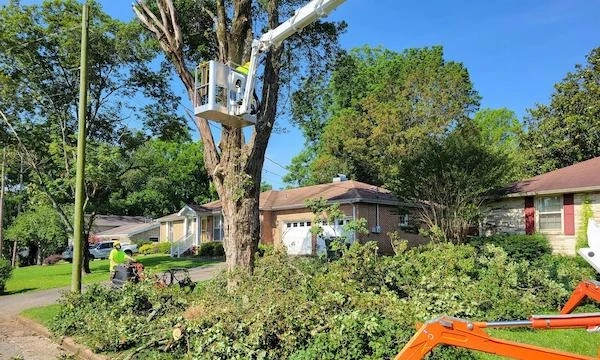Pruning is an essential practice for maintaining the health and aesthetics of trees. However, there's a fine line between beneficial pruning and detrimental overpruning. Understanding how much of a tree can be safely removed is crucial to its long-term health and survival.
Understanding Tree Biology
Water and Nutrient Transport
Trees rely on a network of vessels within their trunks and branches to transport water and nutrients from the roots to the leaves. These vessels are essential for the tree's survival and are easily damaged by excessive pruning.
Photosynthesis and Energy Production
Leaves are the powerhouse of a tree, where photosynthesis occurs to produce energy. Removing too many leaves can significantly reduce a tree's ability to produce food, leading to weakened health and potential decline.
Factors Affecting Tree Health
Tree Species
Different tree species have varying tolerance levels to pruning. Some trees, like maples and cherries, are more sensitive and can suffer greater harm from overpruning compared to hardier species like oaks.
Age and Size
Young trees and smaller branches can generally withstand more pruning than older, larger trees. Older trees have limited energy reserves and may struggle to recover from extensive pruning.
Health and Vigor
A healthy, vigorous tree can recover more easily from pruning stress than a tree that is already weakened by disease, pests, or environmental factors.
Pruning Practices
Types of Pruning
Crown Cleaning: Removing dead, diseased, or broken branches.Crown Thinning: Selectively removing branches to improve light penetration and air circulation.Crown Reduction: Decreasing the size of the tree's canopy to reduce wind resistance or clearance issues.Crown Raising: Removing lower branches to provide clearance for structures or pedestrians.Pruning Techniques
Proper pruning cuts are essential to minimize damage and promote healing. Always prune just outside the branch collar, avoiding leaving stubs or making flush cuts.
Pruning Guidelines
Avoid removing more than 25% of a tree's canopy in a single pruning session.Spread major pruning over several years to reduce stress on the tree.Consult with a professional arborist for guidance on pruning mature trees.How Much Can You Remove?
General Rule of Thumb
A general guideline is to avoid removing more than 25% of a tree's canopy in a single pruning session. For young, healthy trees, this limit can be pushed slightly, but caution should always be exercised.
Specific Tree Species Considerations
Some tree species, like pine and spruce, are more sensitive to overpruning and should be pruned conservatively. Others, like willow and poplar, can tolerate more aggressive pruning.
Signs of Overpruning
Canopy Thinning
Excessive pruning can result in a sparse canopy with a lack of foliage, reducing the tree's ability to photosynthesize and produce energy.
Reduced Growth
Trees that have been overpruned may exhibit stunted growth or fail to produce new shoots and branches.
Disease and Pest Infestation
Weakened trees are more susceptible to diseases and pest infestations, which can further stress the tree and lead to its eventual decline.
Conclusion
Pruning is a necessary practice for maintaining tree health and safety, but it must be done judiciously to avoid harming the tree. Understanding the limits of pruning and the signs of overpruning can help ensure that your trees remain healthy and vibrant for years to come.


